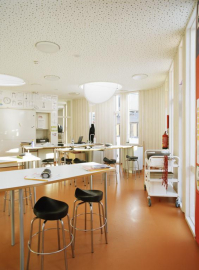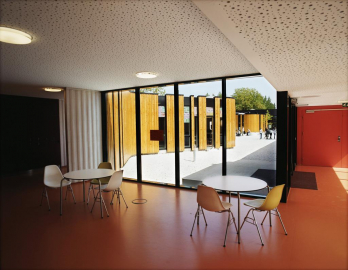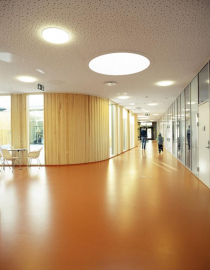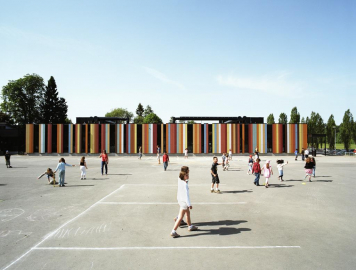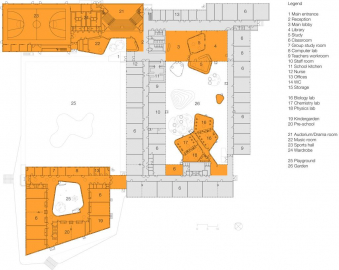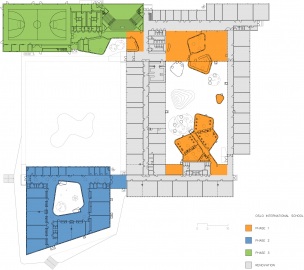Oslo International School
The primary goal of the building project is to upgrade existing areas, replace temporary structures and establish new educational areas for specific needs. The project is divided into 3 phases to make possible continuous use of the school during the construction period.
Oslo International School is a private school with about 500 children from more than 50 different nations, divided into kindergarten, reception, primary and secondary school.
The school is based on a traditional use of classrooms combined with special facilities for advanced studies.
The existing structure from the 1960-ies was worn down, but had obvious architectonic qualities. The organization on one level gives easy orientation, good natural lighting and a close contact to the outdoors.
Phase 1 is established as pavilions within existing atrium. They include science laboratories, library and a main square. The main entrance, as a result of the addition, is moved to the west side of the building.
Phase 2 is a separate pavilion for the smallest children. It houses 10 classrooms in addition to offices. The common areas get daylight from the atrium. Sizes of rooms are flexible, and can be changed according to number of children on each level.
The architecture is developed as a new vocabulary of soft and organic forms, softening dense spatial relationships between new and old areas. At the same time these new areas contain special programs framed by the rectilinear structure of the old.
With reference to the qualities of the old structure, the new buildings are organized around three new atria suited for play and recreation for the different groups of children.
The existing atrium is established as the quiet garden with white gravel, benches and greenery suited for quiet play and conversations.
The atrium in phase two has a rubber floor suited for play for the smallest children. The open school yard towards the west is planned for ball play
The new structure gently transforms the easy organization within a limited budget, and tries to keep the inherent qualities. The new mechanical systems are placed on the roof.

